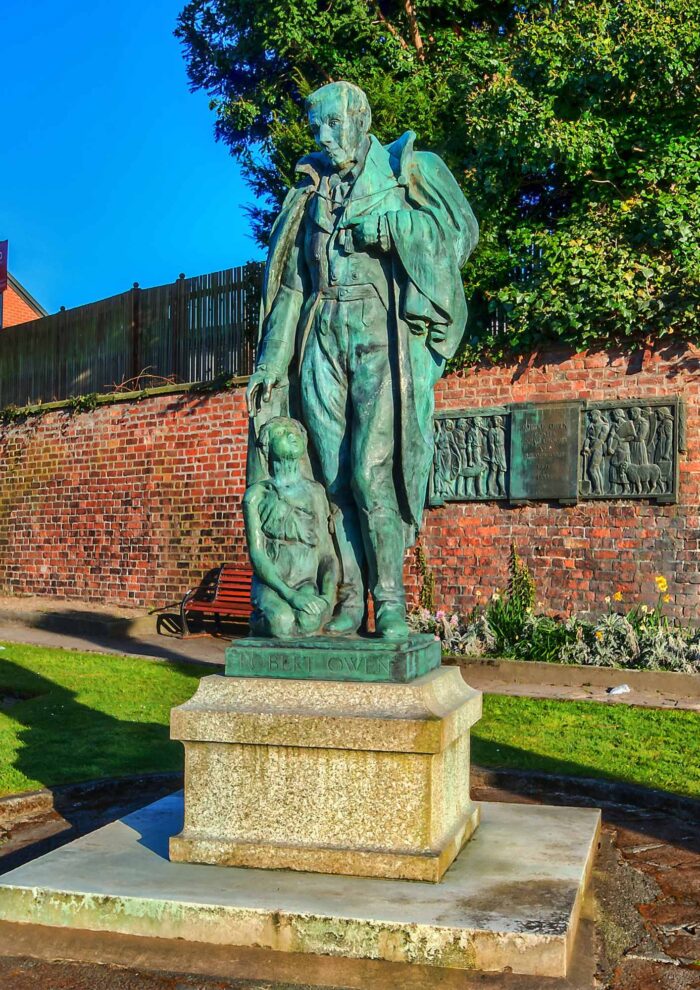Newtown and Llanllwchaiarn Town Council is pleased to share the news that CADW, the historic environment service of the Welsh Government, is proposing to add the Robert Owen Statue & Memorial Garden Boundary Wall in Newtown to the list of buildings of special interest.
The statue, a remarkable work of art erected in 1956, is the creation of Gilbert Bayes, later completed by William Charles Holland King after Bayes’ passing. Cast in the Morris Singer Art Foundry Ltd, the life-size bronze statue depicts Robert Owen, a historically significant figure born and laid to rest in Newtown. The statue showcases Owen with a child sheltering under his cloak at his feet, symbolising his dedication to the co-operative movement, British socialism, education, and improved conditions for working people.
The history of the statue is as compelling as its subject. Owen’s supporters sought a memorial soon after his death in 1858, but opposition from the town fathers of Newtown, based on Owen’s atheism, delayed the project. It wasn’t until 1950 that a committee was established, and with funds provided by the Cooperative Union, and Gilbert Bayes was commissioned in 1951. Although Bayes passed away in 1953, William Charles Holland King completed the work, and the statue has since become a significant part of Newtown’s cultural landscape.
Robert Owen’s legacy as an instigator of the co-operative movement and a tireless campaigner for social and educational reform is immortalised in this iconic statue.
The proposed listing by CADW recognises the historical and cultural significance of the Robert Owen Statue & Memorial Garden Boundary Wall. Newtown and Llanllwchaiarn Town Council notes this and works towards further preserving and celebrating the rich heritage of our town.

